
Photo Essay: Haarlem's Narrowest Streets
When I first arrived in Haarlem, I shot many photographs in a short time. In this batch, we will focus on the narrowest streets, which are, of course, found in the oldest part of the city.
These streets are primarily residential in nature, although there are some commercial uses mixed in, which is the best way to arrange almost any city. (This does not apply to heavy industry, of course.) Building streets this narrow is today illegal almost everywhere, so it is indeed fortunate that so many were built back when nobody thought there was anything wrong with them.
They are highly efficient in their use of space, and they are comfortable to use even centuries later, mostly because there is almost never any car traffic on them. A further advantage of narrow streets is that you can have more of them, which increases the total street frontage on a given area of land. Given that street frontage is valuable, creating more of it and saving money at the same time usually works out well.
Haarlem is by no means an extreme example of narrow streets. Much of Venice is even narrower, and it is difficult to find a street as wide as these in Fes-al-Bali, Morocco.
Click on an image to open a high-resolution version in a new tab.
Ctrl+w will close the new tab and return you to Carfree Times.
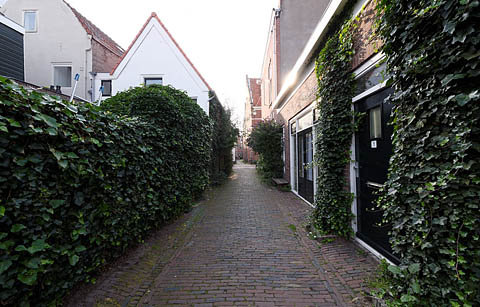

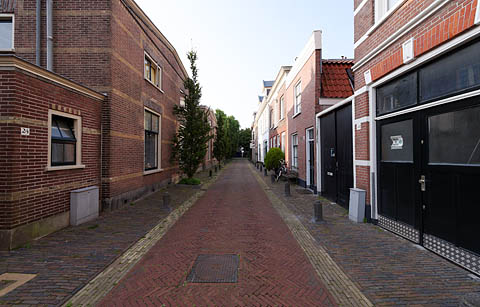

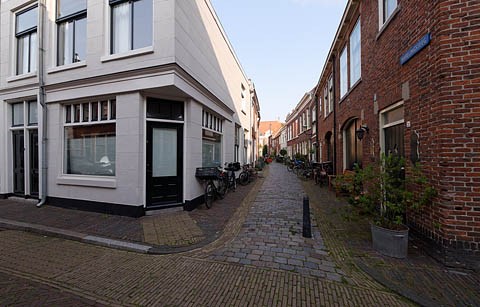

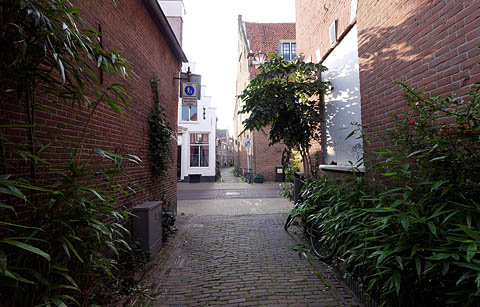

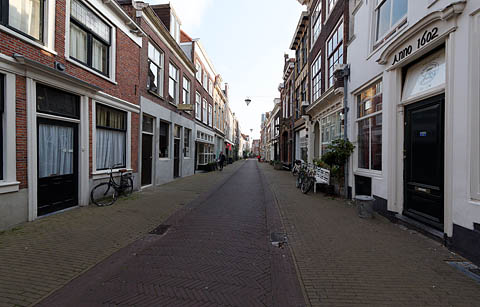

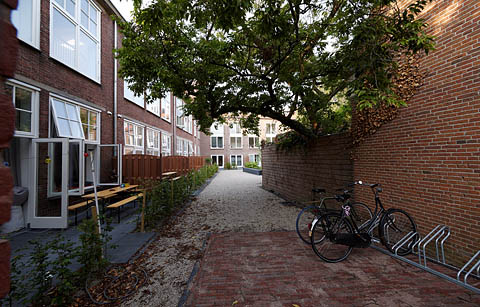

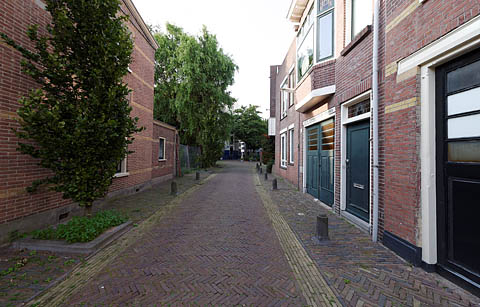

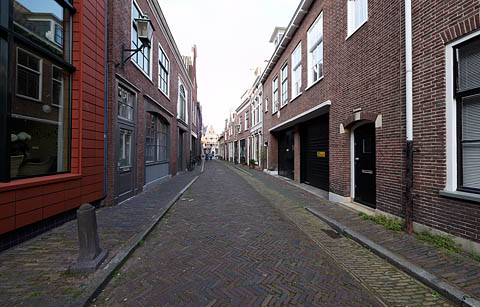

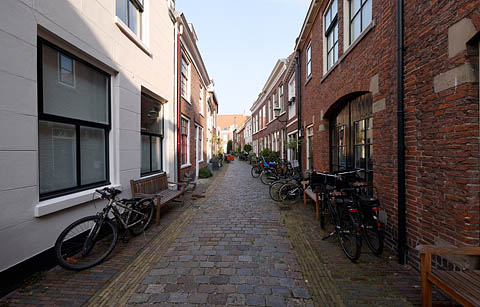

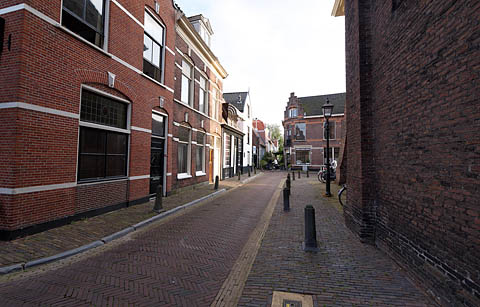

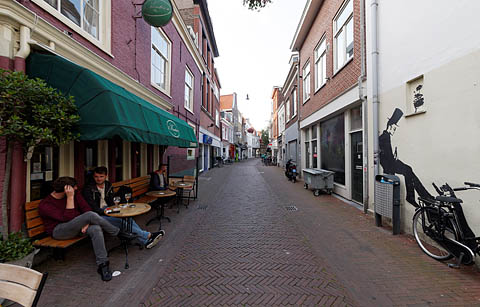

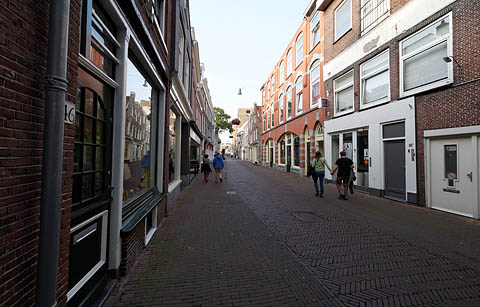

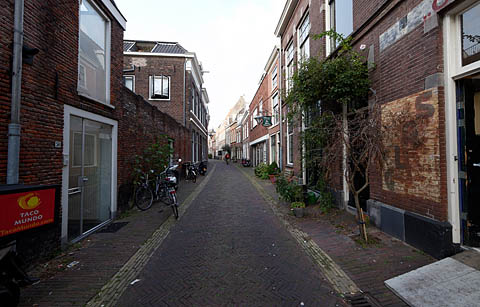

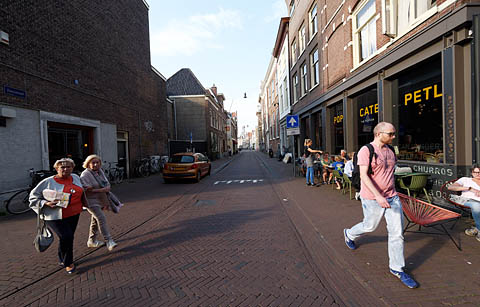

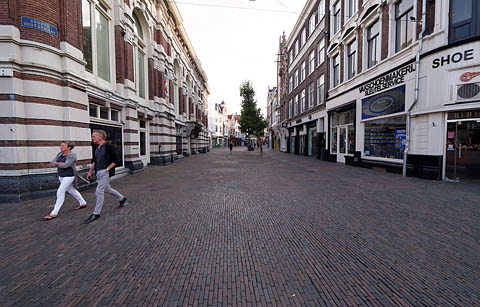


|

|

Carfree.com Announcements
The Token Republic
The Token Republic is a proposed new form of government that takes advantage of technology to establish a government that has many of the advantages of several forms of government without most of the disadvantages. It is a form of "directer" democracy that recognizes that direct democracy, as attractive as it may be, is not a workable form of government except in the smallest governmental units (think of the New England town meeting tradition).
This is a first cut at the idea. If the notion is to go anywhere, it will need, eventually, the support of millions of people and the thinking and input of thousands. I am putting the idea out there now, without yet having established a way for a cooperative development of the ideas to go forward. If there is interest, I'll find a way to do that.
The Books
Carfree Cities and Carfree Design Manual are widely available from booksellers in Europe and North America.
Videos
The existing 30 videos continue to draw views. You can find them on YouTube.
You can also use the Vimeo channel: Carfree.
If you watch a video, please Like it.
Security
Your web browser is probably marking pages from Carfree.com as "not secure." The web server does not use the secure https protocol because there is no private information on Carfree.com that needs securing. (Your email subscription is not maintained on the server.) So as far as I know, it remains safe for you to browse the dangerous(!) ideas on Carfree.com.

Quote of the Century
"We cannot have a society in which, if two people wish to communicate, the only way that can happen is if it's financed by a third person who wishes to manipulate them,"

News Bits
The links below will open in a new browser window or tab, depending on your browser; (Ctrl+click) may behave differently:
"Scientists Warn the UN of Capitalism's Imminent Demise: A climate change-fueled switch away from fossil fuels means the worldwide economy will fundamentally need to change." (Motherboard)
Key areas to achieve this include transport, food, and construction. City planning needs to adapt to the promotion of walking and biking, a shift toward public transport, as well as the electrification of transport. Homes and workplaces will become more connected and localised. Meanwhile, international freight transport and aviation cannot continue to grow at current rates.
Change will have to come fastest in cities, and it really needs to begin now. The electric car is mostly a distraction, at least in cities - cars need to move out of cities, regardless of how they are powered.
"The social ideology of the motorcar: This 1973 essay on how cars have taken over our cities remains as relevant as ever" (UnevenEarth.org)
Coming to you from the Ivan Illich school, a treatise on why cars don't work and why they never will. Useful fodder for building an argument against cars in cities.
"The future will be dockless: could a city really run on 'floating transport'?" (TheGuardian.com)
London-based transportation app Citymapper coined a new phrase: 'floating transport'. 'It has no set stops or infrastructure and it's filling a mobility gap in our cities.'
Life really has gotten complicated. Once it was just cars, public transport, bikes, and walking. Now there are a wide variety of other forms of light transport that may not get along very well with either the infrastructure or its users. Nevertheless, some of these options are probably going to prove useful. Solutions to the "last mile" problem are badly needed. I prefer bikes myself, but it's good to be aware of the alternatives. See also: "Why Little Vehicles Will Conquer the City" (CityLab.com)
"Mopeds may be banned from Amsterdam bike lanes next January" (DutchNews.nl)
Currently mopeds which travel at up to 25 kph are allowed to use bike paths and their drivers do not have to wear helmets. But up to 80% of mopeds are thought to be capable of higher speeds, and growing congestion on the bike paths is forcing the city to take action.
Unfortunately, it's only Amsterdam so far. Motor scooters are making it much less safe and pleasant to cycle in the Netherlands, and they are flying out of the shops. Even new models stink as they go by, and the older ones are horrific. Mopeds were allowed on bike paths because their riders would be safer there than on the streets. This is certainly correct, as far as it goes. But bike riders are far less safe, and people are discouraged from cycling, which is intrinsically health-building. Some sloppy Dutch policy making was at work.
"View From the Protests: Dhaka Should Go Car-Free" (CityLab.com)
For nearly two weeks, Bangladesh’s capital city has been riven with protests following the death of two students in a traffic incident. A longtime Dhaka resident reports on the situation and offers a solution to the traffic problem.
"Poisoning the air we breathe" (NepaliTimes.com)
Dust and smoke can be seen, but invisible poisonous gases in motorcycle emissions are making us sick
In places like Nepal, emissions from ancient diesel-powered buses and trucks are probably the most serious cause of air pollution, but motorcycles are not far behind. In bringing carfree areas to cities around the world, it's essential to keep in mind why the motorcycle has taken over Asia: public transport is awful in most of these cities. It can take five times as long to make a trip by bus as by motorcycle. And you probably don't really want to be cycling in that polluted air, although it would otherwise be a fine option in many circumstances.
"Car free cities: Pathway to healthy urban living" (ResearchGate.net)
Haneen Khreis and Mark J. Nieuwenhuijsen wrote this paper on the health impacts of carfree cities. There are, of course, a great many unknowns, but the overall impacts would be large and generally favorable. This is one of a growing number of scholarly studies of carfree cities.
"Where is the world's most walkable city?" (TheGuardian.com)
The author seems to conclude that it's Fes-al-Bali, Morocco. I don't have any better city to put forward. Fes is believed to be the world's largest contiguous carfree area, at least by population. It also has the narrowest streets of any city I have visited.
"Sunday morning, the era of the automobile comes to an end" [Dutch] (Parool.nl)
In connection with the recent opening of the long-delayed North-South metro line in Amsterdam, cars have been tossed out of places that should have been off limits for years. The improvements should be substantial.
"Cities urged to adopt Bicycle Mayors to accelerate progress" (BYCS.pr.co)
With 'Bicycle Mayors' now active on every continent, tackling everything from air pollution to social mobility, a new campaign calls on cities to join the growing global change network.
This is fine except that they should be "bicycle and pedestrian mayors."
"Rethinking Manhattan’s Grid" (CityLab.com)
What do you get when you layer the Barcelona “superblock” and the Dutch woonerf onto Manhattan’s grid? Streets that are for people.
Most of the streets would be converted to woonerven with brick paving, fully-mixed traffic, and walking speeds. Some of the streets and avenues would remain "thoroughfares," but even here a lot of space would be reclaimed from automotive uses. On-street parking would be eliminated. It's a brave vision, and I hope they can make it a reality. It's distinctly car-lite, not carfree.
"Charlotte Moves toward a Car-Free City Center" (NextCity.org)
North Carolina's NASCAR capital reimagines its Uptown neighborhood as a pedestrian-centered, mixed-use idyll. But in the drive to redevelop, has affordability been left behind?
It's one of the paradoxes we'll have to deal with: carfree cities are economically far more efficient than auto-centric cities, and they are also so pleasant to live in that housing prices can be expected to rise. However, it should not be difficult to develop a large stock of affordable carfree housing on land freed up by eliminating parking.
Silicon Valley, for instance, is at a dead end. Housing prices are extreme because of huge demand and very little addition to the supply. This, one of the most pleasant areas of the world, cannot continue to flourish unless something is done to at least reduce the near-total reliance on cars for transport. The irony of NASCAR-centric Charlotte booting some cars out of downtown is epic.
"Raahgiri 2.0: Re-Engineering Car-Free Days for Smaller Cities in India" (TheCityFix.com)
Inspired by Ciclovía in Bogotá and beginning in Gurgaon in November 2013, Raahgiri is India's first sustained car-free initiative.
It's a pity that India has continued to plow down the cars-at-any-cost highway. Once more, the allure of Western ways has corrupted a society that didn't yet understand what the costs would be.
"Push for car-free Melbourne CBD" (9news.com.au)
Radical new measures have been proposed by Melbourne City Council to push cars out of the city centre.
Well, it's generally an improvement, but it's not really carfree. It apparently does come with a package of public transport improvements.
"Edinburgh to introduce one car-free day a month in city centre" (ShropshireStar.com)
Pilot scheme will see vehicles banned from 'key parts' of Scotland's capital on the first Sunday of every month.
There is a general trend, most noticeable in the EU, towards more and larger carfree events.
"American Cities Are Drowning in Car Storage" (StreetsBlog.org)
Parking spaces are everywhere, but for some reason the perception persists that there's 'not enough parking.' And so cities require parking in new buildings and lavishly subsidize parking garages, without ever measuring how much parking exists or how much it's used.
This is Donald Shoup speaking. He's probably the world's leading authority on the "high cost of free parking" (he wrote the book).
"Parking Has Eaten American Cities" (CityLab.com)
A new study documents the huge amount of space taken up by parking, and the astronomical costs it represents, in five U.S. cities.
In some cities it seems that there are more than 25 parking spaces per household. The most prosperous US city, New York, is the only city mentioned that has less than one parking space per household (0.6). Philadelphia, the runner up, has 3.7. It's good that the research has finally been done - until now, the numbers were just guesses. It turned out to be even worse than expected - 10 had been the most commonly cited number.
"We designed Canada's cities for cars, not people - and the people are dying" (TheGuardian.com)
Toronto's latest toll of cyclists and pedestrian deaths is hardly unique - cities all bought the myth that cars give us freedom
Actually, a few cities didn't buy it - Venice, Fes-al-Bali, and some other cities were never modified to accept cars, so they have never had them. But for the most part, as typified by Robert Moses and the city of New York, cities were extensively modified for the convenience of drivers, and to hell with everyone else. It was not a good decision.
"In praise of the tram: Britain's lost network and the future of transport" (TheGuardian.com)
The UK once had an extensive tram network, now reduced to just eight cities. Would resurrecting the historical network solve Britain’s transport woes?
Maybe. Take a look at the maps of Glasgow, which once had an extensive tram network, of which nothing is left. You can perhaps argue that self-driving electric buses can be used in place of trams, and the answer is that this should be possible, but that trams remain in many ways superior. The "self-driving" part is important. A bus driver recently threw me on the floor of his bus by extremely rough handling. It's easy to program a self-driving vehicle not to do this except in an emergency. It's still generally true that trams provide better ride quality than buses, but the differences are not so great as they were decades ago.
"Hydrogen train approved" [Dutch] (DeIngenieur.nl)
Hybrid (fuel cells + batteries) hydrogen-fueled trains have now apparently been successfully developed. This is significant for a number of reasons. First of all, by implication, the technology can be applied to trams, although pure battery-powered trams may ultimately be a better solution. Second, these trains are excellent for operation on lines that are not and probably will not be electrified. They are clean and should be quiet. All of this gives us more flexibility in arranging sustainable rail transport, which needs to become the backbone of long-distance transport worldwide, simply because trains are the most energy-efficient mechanized mode.
"Hostile architecture: an uncomfortable urban art - in pictures" (TheGuardian.com)
This is a lesson in how to make your city unpleasant. Anybody could do it! That does, of course, leave the question, why? Stop your city from "solving" problems in ways that impair its character. Real solutions include real toilets and real places for the homeless to sleep.
"An inversion of nature: how air conditioning created the modern city" (TheGuardian.com)
Air conditioning has had enormous effects on cities, and the results have been almost as bad as its co-conspirator, the car.
"You Can't Fix Mass Transit By Destroying It" (CityLab.com)
A suggestion that the New York City subway could be replaced by tunnels for autonomous cars would only exclude the riders who need it most.
This may seem like a "Yeah, duh" moment, but there's more. The article argues persuasively that if transit is not all-inclusive, it further deepens the gap between rich and poor.

About Carfree Times
Next Issue
The next issue of Carfree Times is scheduled for December 2018.
Subscribe to Carfree Times
Carfree Times is published quarterly at Carfree.com.
To receive e-mail notices of new issues, please visit the subscription page or
send e-mail with the word "Subscribe" in the subject line. We do not share our mailing list.

Back to Carfree.com
Carfree Times Home
Back to Carfree Times Issue 90
E-mail
carfree.com
Text and illustrations, except for guest content, placed in the public domain

|